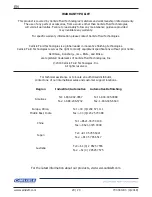
77-3049-R3 (4/2018)
13 / 20
EN
www.carlisleft.com
CLEANING
In certain states it is now against the law to spray
solvents containing Volatile Organic Compounds (VOCs)
into the atmosphere when cleaning a spray gun.
In order to comply with these new air quality laws Binks
recommends one of the following two methods to clean
your spray finishing equipment:
1. Spray solvent through the gun into a closed system.
An enclosed unit, or spray gun cleaning station,
condenses solvent vapors back into liquid form which
prevents escape of VOCs into the atmosphere.
2. Place spray gun in a washer type container. This
system must totally enclose the spray gun, cups,
nozzles, and other parts during washing, rinsing, and
draining cycles. This type of unit must be able to flush
solvent through the gun without releasing any VOC
vapors into the atmosphere. Additionally, open
containers for storage or disposal of solvent, or
solvent-containing cloth or paper, used for surface
preparation and clean-up may not be used. Containers
shall be non-absorbent.
To clean the gun, flush the fluid lines with solvent and
blow air through the air lines to make sure all the air
passages are dry.
!
CAUTION
Never completely submerge the gun in
solvent as this will dissolve the lubricating
oil and dry out the seals.
TROUBLESHOOTING
FAULTY SPRAY
A faulty spray may be caused by improper cleaning,
dried materials around the fluid nozzle tip or in the air
cap. Soak these parts in thinners that will soften the
dried material and remove with a brush or cloth.
!
CAUTION
Never use metal instruments to clean the air
or fluid nozzles. These parts are carefully
machined and any damage to them will
cause faulty spray.
If either the air cap assembly (5) or fluid nozzle (7) are
damaged, these parts must be replaced before perfect
spray can be obtained.
INTERMITTENT SPRAY
If the spray flutters, it is caused by one of the following
faults:
1. Insufficient material available. Check supply and
replenish if necessary.
2. Loose fluid nozzle (2). Tighten, but without using
undue force.
3. Leakage at gland adapter (35) and needle seal (36).
Tighten packing nut (39) if loose, and replace gland
adapter and needle seal if necessary.
4. Fluid connection insufficiently tight or dirt on cone
faces of connection. Correct as necessary.
5. Leaking cylinder air and/or inadequate pressure.






































